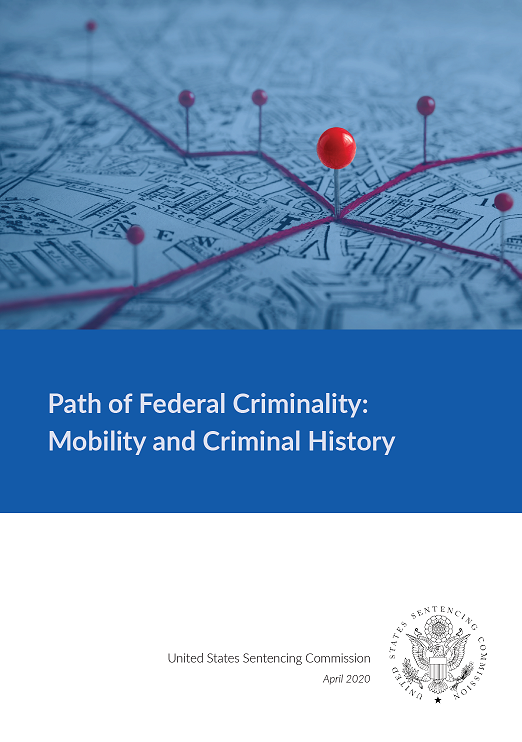Summary
 (Published April 20, 2020) This study expands on prior Commission research by examining the geographic mobility of federal offenders. For this report, mobility is defined as having convictions in multiple states, including the location of the conviction for the instant offense. This report adds to the existing literature on offender criminal history in two important ways. First, the report provides information on how mobile federal offenders are, as measured by the number of offenders with convictions in multiple states. Second, the report provides information on the proportion of offenders with convictions in states other than the state in which the offender was convicted for the instant offense. The report also examines the degree to which out-of-state convictions in offenders’ criminal histories contributed to their criminal history score and their Criminal History Category.
(Published April 20, 2020) This study expands on prior Commission research by examining the geographic mobility of federal offenders. For this report, mobility is defined as having convictions in multiple states, including the location of the conviction for the instant offense. This report adds to the existing literature on offender criminal history in two important ways. First, the report provides information on how mobile federal offenders are, as measured by the number of offenders with convictions in multiple states. Second, the report provides information on the proportion of offenders with convictions in states other than the state in which the offender was convicted for the instant offense. The report also examines the degree to which out-of-state convictions in offenders’ criminal histories contributed to their criminal history score and their Criminal History Category.
- Full Report
- Related Reports:
- The Past Predicts the Future: Criminal History and Recidivism of Federal Offenders (March 2017)
Key Findings
- Almost one-third (30.0%) of the total federal offender population in fiscal year (FY) 2018 had convictions in more than one state.
-
The mobility of federal offenders varies by offender characteristics:
- Immigration offenders were the most likely to have convictions in more than one state (38.7%), while child pornography offenders were the least likely (16.4%) to have convictions in more than one state.
- Just under one-third (31.8%) of male offenders had convictions in two or more states compared to 17.8 percent of female offenders.
- Hispanic offenders (31.0%) were the most likely to have convictions in more than one state, closely followed by White (29.3%), Black (28.5%) and Other race (27.8%) offenders.
- The percentage of offenders having convictions in states other than the state of their instant offense varied from a high of 59.1 percent in North Dakota to a low of 10.5 percent in the territory of Puerto Rico.
- A total of 13,904 FY 2018 offenders had out-of-state convictions that received criminal history points. Almost three-quarters of these offenders (73.9%) had a higher Criminal History Category due to these convictions.
